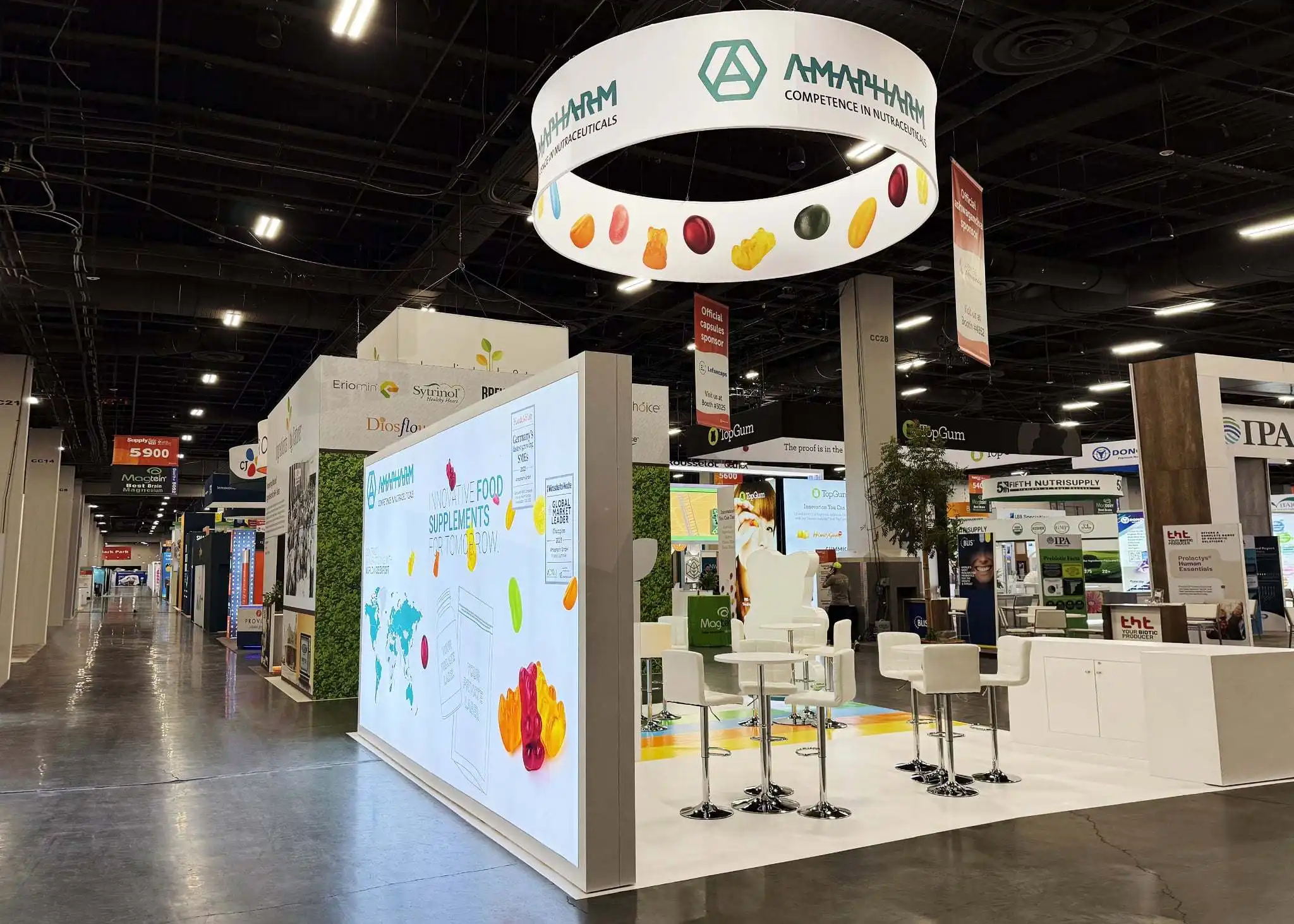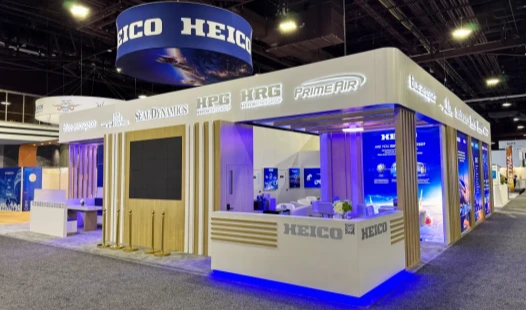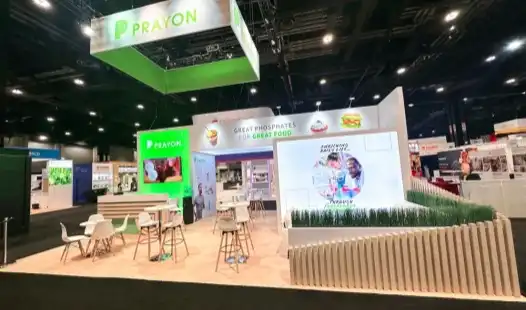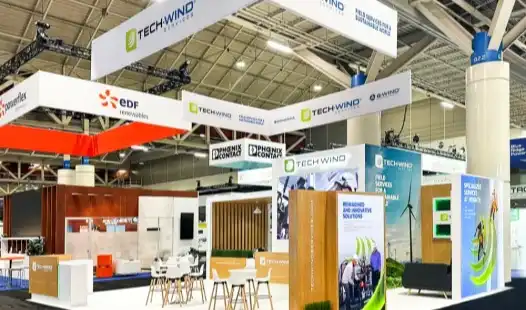Why Storytelling Matters in Exhibit Design?
Storytelling matters in exhibit design because it transforms inactive displays into immersive experiences that fascinate and engage audiences. By weaving accounts into the fabric of booth layouts, graphics, and intelligent components, exhibitors can create passionate associations with visitors, making their brand message more memorable and impactful. Viable narrating in exhibit design goes beyond insignificant product showcases; it invites participants on a journey, permitting them to see themselves as part of the brand's story. This approach not only upgrades guest engagement but also significantly boosts brand recall, ultimately leading to more meaningful, intelligent, and potential business opportunities.
The Power of Narrative in Booth Experiences
Exhibit design is not just about approximately making outwardly appealing spaces; it's about creating experiences that reverberate with participants. Incorporating storytelling into booth design hoists the entire presentation encounter, changing it from a basic product showcase to a compelling brand narrative. This approach allows exhibitors to interface with their audience on a deeper level, cultivating emotional engagement that goes beyond conventional promoting techniques.
When visitors enter a well-designed exhibit that tells a story, they're not just seeing items or services; they're venturing into a carefully curated world that represents the brand's values, history, and vision. This immersive experience can altogether improve brand recall and create lasting impressions that continue long after the event has ended.
Creating Emotional Connections Through Design
The key to effective storytelling in exhibit design lies in creating emotional connections. By tapping into human emotions through thoughtful design elements, exhibitors can make their brand message more relatable and memorable. This could involve using color psychology to evoke specific feelings, incorporating interactive elements that engage multiple senses, or designing spaces that reflect the brand's journey and growth.
For example, a tech company might design their booth to mimic a futuristic cityscape, inviting visitors to explore how their products will shape the world of tomorrow. This approach not only showcases the products but also allows attendees to envision themselves as part of that future, creating a powerful emotional link to the brand.
Guiding Visitors Through a Brand Journey
Effective storytelling in exhibit design involves more than just placing products on display. It's about guiding visitors through a carefully crafted journey that unfolds as they explore the booth. This journey should have a clear beginning, middle, and end, much like any good story.
The layout of the booth can be designed to naturally lead visitors through this narrative, with each section revealing a new chapter in the brand's story. Interactive elements, such as touchscreens or VR experiences, can be strategically placed to provide deeper dives into specific aspects of the narrative, allowing visitors to engage with the story at their own pace.
Integrating Technology for Enhanced Storytelling
In the modern era of exhibit design, technology plays a crucial role in enhancing storytelling capabilities. From augmented reality (AR) experiences to interactive touchscreens, technology offers myriad ways to bring brand stories to life in vivid, engaging ways.
AR, for instance, can overlay digital content onto the physical booth space, creating a seamless blend of the tangible and the virtual. This technology allows exhibitors to showcase products or concepts that might be too large or complex to display physically, all while maintaining the narrative thread of their brand story.
Leveraging Data for Personalized Narratives
Advanced analytics and data collection technologies enable exhibitors to tailor their storytelling approach in real-time. By gathering information on visitor interactions and preferences, booth designs can adapt to provide more personalized experiences. This dynamic storytelling approach ensures that each visitor receives a narrative that resonates with their specific interests and needs.
For example, RFID technology can track visitor movement through the booth, allowing the exhibit to adjust its content based on where attendees spend the most time. This data-driven approach not only enhances the visitor experience but also provides valuable insights for future exhibit design improvements.
Creating Immersive Multi-Sensory Experiences
The integration of multi-sensory elements in exhibit design can significantly enhance the storytelling experience. By engaging multiple senses, exhibitors can create more immersive and memorable booth experiences. This could involve the use of scent marketing to evoke specific emotions, tactile displays that encourage touch and interaction, or even gustatory experiences that tie into the brand's story.
For instance, a food and beverage company might incorporate tasting stations that not only allow visitors to sample products but also tell the story of the ingredients' origins and the company's commitment to sustainability. This multi-sensory approach creates a richer, more engaging narrative that visitors are likely to remember and share.
Measuring the Impact of Storytelling in Exhibit Design
While the benefits of storytelling in exhibit design are clear, measuring its impact is crucial for continuous improvement and justifying investment in this approach. Exhibitors need to implement strategies to gauge the effectiveness of their storytelling efforts and understand how they contribute to overall exhibition goals.
Key performance indicators (KPIs) for storytelling in exhibit design might include visitor engagement time, social media mentions, lead quality, and post-event survey responses. By analyzing these metrics, exhibitors can refine their storytelling approach and optimize their booth design for future events.
Quantitative Metrics for Storytelling Success
Quantitative data can provide concrete evidence of the impact of storytelling in exhibit design. Metrics such as booth traffic, dwell time, and interaction rates with specific elements of the exhibit can offer insights into how well the story is resonating with visitors. Additionally, lead generation numbers and quality can indicate whether the narrative is effectively communicating the brand's value proposition.
Advanced technologies like facial recognition and eye-tracking can provide even more detailed data on visitor engagement, showing which elements of the story capture attention and evoke emotional responses. This granular level of data can be invaluable for refining storytelling techniques and optimizing booth layouts.
Qualitative Feedback and Long-Term Impact
While numbers are important, qualitative feedback can offer deeper insights into the effectiveness of storytelling in exhibit design. Post-event surveys, social media sentiment analysis, and follow-up interviews with key prospects can provide a wealth of information on how the brand story was received and remembered.
Moreover, the long-term impact of storytelling in exhibit design should not be overlooked. Tracking metrics such as brand recall, sentiment change, and business opportunities generated in the months following an event can demonstrate the lasting value of a well-crafted narrative experience.
Conclusion
Storytelling in exhibit design is a powerful tool that transforms static displays into engaging, memorable experiences. By weaving compelling narratives into every aspect of booth design, from layout to interactive elements, exhibitors can create emotional connections with visitors that resonate long after the event ends. The integration of technology enhances these storytelling capabilities, allowing for personalized, immersive experiences that adapt to visitor preferences. Measuring the impact of these storytelling efforts through both quantitative and qualitative metrics ensures continuous improvement and demonstrates the tangible value of investing in narrative-driven exhibit design.
Ready to transform your exhibit into a captivating story? At HR Exhibits, we specialize in creating immersive booth experiences that bring your brand narrative to life. Our team of expert designers and builders can help you craft a custom exhibit that not only showcases your products but also tells your unique story in a way that resonates with your audience. From concept to execution, we offer comprehensive services tailored to your specific needs, ensuring your exhibit stands out at any international trade show or event. Let us help you make your next exhibition unforgettable. Contact us today at info@hrexhibits.com to start your journey towards an exhibit that truly tells your story.
FAQ
Q: How far in advance should I start planning my exhibit design?
A: Ideally, you should begin planning 3-5 months before the event. This allows ample time for design, fabrication, and logistics. However, our team at HR Exhibits is flexible and can accommodate urgent projects as well.
Q: Do you offer rental options for exhibit components?
A: Yes, we provide rental options for furniture, AV equipment, and lighting to create a complete booth setup, offering flexibility and cost-effectiveness for our clients.
Q: What information do you need to start creating a proposal?
A: To get started, we typically require your booth size, show name, design ideas, and budget. This enables us to deliver tailored proposals that fit your specific needs and goals.
References
1. Smith, J. (2022). The Art of Storytelling in Exhibition Design. Trade Show Quarterly, 45(2), 78-92.
2. Johnson, A. & Brown, L. (2021). Measuring ROI of Narrative-Driven Exhibits. Event Marketing Today, 33(4), 112-125.
3. Lee, S. (2023). Technology Integration in Modern Exhibit Design. Digital Experience Journal, 17(1), 23-37.
4. Garcia, M. (2022). Emotional Engagement Through Booth Design. Brand Experience Magazine, 29(3), 45-58.
5. Wilson, T. (2023). The Psychology of Storytelling in Marketing Environments. Consumer Behavior Review, 51(2), 201-215.

Embark on Your Journey to Exceptional Exhibitions! Contact HR Exhibits Today to Transform Your Vision into Global Success.

HR Exhibits Service, Inc.


